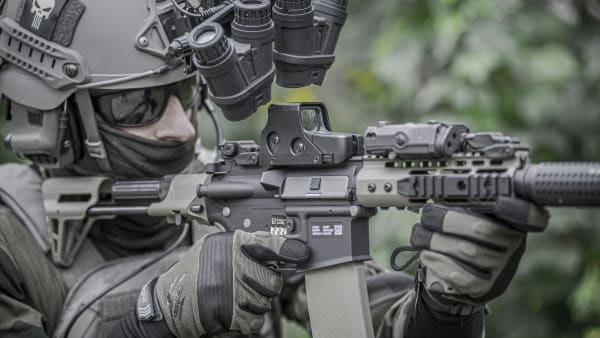As society evolves, so does the nature of armed conflict. The advent of digital technology has ushered in a new era of modern warfare, integrating advanced technology into the military field and producing a profound shift in the way conflicts are waged. Modern warfare technology encapsulates everything from GPS-guided munitions and stealth technology to artificial intelligence and drones. Thus, understanding its scope and its effects has become crucial for military strategists and policy analysts around the globe.
What is Modern Warfare Technology?
Modern Warfare Technology is a term that covers the gamut of advanced technologies developed for use in national defense and combat. This not only includes the well-known drones, stealth aircraft, and guided munitions but also spans the realm of cybersecurity, communication systems, and artificial intelligence. Key characteristics of modern warfare technology are:
- Technological sophistication
- Dependency on the digital domain
- Global Reach
- Precision and low collateral impacts
These characteristics define the evolution of military affairs, stressing speed, precision, and technology over traditional brute force.
Technologies that are Changing the Battlefield
Several modern technologies, with their roots in the civilian world, have been adapted for military use and are disrupting the traditional paradigms of warfare.
1. Drones
Drones have become a ubiquitous piece of modern warfare technology. They are used for a variety of tasks from surveillance to strike operations, delivering accurate and lethal attacks from a safe distance. They represent the perfect blend of innovation and practicality, with models varying from the intimidating MQ-9 Reaper to smaller, more agile quadcopters.
2. Cyber Warfare
With societies becoming more interconnected and dependent on the digital realm, cybersecurity has become a pivotal aspect of national defense. Cyber warfare involves the use of digital attacks to disable computers, steal data, or use a breached system as a launch point for other attacks. Modern warfare now includes a cyber component, wherein the aim is to disrupt the enemy's ability to communicate and operate effectively.
3. Artificial Intelligence (AI)
AI is arguably the most transformative modern warfare technology, with a vast range of military applications from logistics and surveillance to autonomous weapons. AI can process vast amounts of data at speeds far beyond human capability, providing a crucial edge in planning and executing military operations.
4. Stealth Technology
Stealth technology enables aircraft, ships, and other military assets to be effectively invisible to radar, infrared, sonar, and other detection methods. This reduces the likelihood of detection and increases the effectiveness of offensive and defensive operations.
Implications of Modern Warfare Technology
The advent of these advanced technologies has created a paradigm shift in the dynamics of warfare. Here are some key implications to consider:
1. Democratic nature of technology
In contrast to the past when advanced weaponry was limited to wealthy nations, access to modern warfare technologies like drones and cyber-attacks is relatively universal. This means that even non-state actors or smaller nations can pose significant threats, effectively leveling the playing field.
2. Legal and Ethical Challenges
Emerging technologies like autonomous weapons and drones bring up a host of legal and ethical questions. For instance, who holds the legal and moral responsibility for a drone strike? These debates continue to shape an evolving battlefield.
3. Greater Reliance on Intelligence
With modern warfare technology enabling precision strikes, the intelligence has become more vital than ever before. The need to understand the enemy's position in real-time, combined with the need to avoid civilian casualties, makes the collection and analysis of intelligence a critical aspect of modern conflict.
4. Warfare Evolution
Warfare has evolved from brute force confrontations to invisible electronic and cyber battles. The changes introduced by modern warfare technology necessitate new military strategies and tactics, and place a greater onus on technical expertise and sophisticated equipment.
In this context, it is clear that modern warfare technology is shifting the nature of combat drastically and rapidly. Resources once committed to conventional methods and munitions are being redirected toward information technology and artificial intelligence. The aptitude to understand and adapt to this rapidly evolving scenario will be pivotal in gaining advantage in the battlefields of tomorrow.
The integration of digital technology in warfare is still in its nascent stages, with much room for growth and development. The future may see further enhancements like quantum computing, gene editing for super soldiers or even more developed form of cyber-warfare. In a world where technology is advancing at an unprecedented pace, the only constant in warfare will be change.
Committing to the research, adaptation and ethical use of modern warfare technology could very well be the defining factor of geopolitical power in the decades to come. In the end, the nation or faction with the superior technology, the vision to foresee potential applications, and the agility to adapt to new tools and methods will triumph in the modern battlefield.




